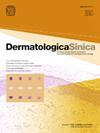透照、超声和多普勒实时成像在提线中的应用
IF 2.3
4区 医学
Q2 DERMATOLOGY
引用次数: 1
摘要
近年来,螺纹提升术因其微创性而越来越受欢迎。无论使用何种技术,关键是在最佳解剖平面上穿线并悬挂正确的目标组织。未能达到这些目标可能导致慢性疼痛;轮廓不规则;线程迁移或暴露;以及神经、血管和腺体损伤。仅凭面部解剖学知识不足以证实患者的解剖变异。超声引导下的螺纹提升可以进行,因为套管针呈现出高回声信号,带有卡口和混响伪影。超声是一种有效的工具,因为它可以提供面部解剖层、脂肪垫、肌肉、筋膜、韧带、浅表肌腱膜系统、动脉和腮腺导管的实时图像。然而,透照可以验证浅表血管的存在,防止静脉穿刺和损伤同侧动脉。透照和超声的结合提供了三维信息。在本研究中,为了评估面部解剖和引导穿线,再次确认穿线的位置,并防止事故发生,建议采用透照、超声和多普勒成像等实用策略,以提高患者在手术期间、术前和术后的安全性。本文章由计算机程序翻译,如有差异,请以英文原文为准。
The applications of real-time imaging with transillumination, ultrasound, and Doppler for thread lifting
Thread lifting has gained popularity in recent years because of its minimally invasive properties. Regardless of the technique used, the key is threading in the optimal anatomical plane and suspending the correct target tissue. Failure to meet these objectives may result in chronic pain; contour irregularity; thread migration or exposure; and nerve, vessel, and gland injuries. The knowledge of facial anatomy alone is insufficient to corroborate the anatomical variations of a patient. Ultrasound-guided thread lifting can be performed because the trocar presents a hyperechogenic signal with bayonet and reverberation artifacts. Ultrasound is an effective tool because it can provide real-time images of the layers of the facial anatomy, fat pads, muscles, fascia, ligaments, superficial muscular aponeurotic system, arteries, and parotid duct. Transillumination, however, can be conducted to verify the presence of superficial vessels and prevent venipuncture and injury to homonymous arteries. The combination of transillumination and ultrasound provides three-dimensional information. In this study, to evaluate facial anatomy and guide threading, reconfirm the position of the thread, and prevent malpractices, practical strategies such as transillumination, ultrasound, and Doppler imaging are recommended for improving patient safety during, before, and after the procedure.
求助全文
通过发布文献求助,成功后即可免费获取论文全文。
去求助
来源期刊

Dermatologica Sinica
DERMATOLOGY-
CiteScore
2.80
自引率
20.00%
发文量
28
审稿时长
>12 weeks
期刊介绍:
Dermatologica Sinica aims to publish high quality scientific research in the field of dermatology, with the goal of promoting and disseminating dermatological-related medical science knowledge to improve global health. Articles on clinical, laboratory, educational, and social research in dermatology and other related fields that are of interest to the medical profession are eligible for consideration. Review articles, original articles, brief reports, case reports and correspondence are accepted.
 求助内容:
求助内容: 应助结果提醒方式:
应助结果提醒方式:


